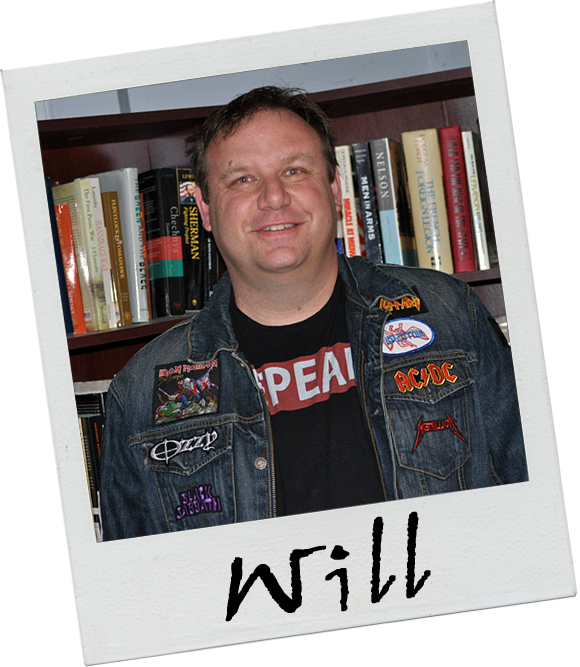 By Will Stroock
By Will Stroock
There has never been anything like Heavy Metal. Featuring thundering power chords, lightning strike guitar solos, and ear splitting lyricists, by the mid 1980’s metal conquered rock and roll, dominating the airwaves and MTV. Some bands employed life sized dummies and sung before giant murals depicting great battles. Many bands used pyrotechnics to add to the impact of a live performance. Some even recorded cannon bursts into their song tracks. It enjoys a powerful revival today.
The first true Metal band was Black Sabbath, a blues influenced group whose members came of age in the postwar ruins of Birmingham, England. Sabbath’s first album, Paranoid, released in 1968, featured an anti-Vietnam war song called War Pigs. Like many songs of the era, War Pigs lambasts the military and political leadership, but unlike a lot of anti-war songs of the era, it does so accompanied by scorching power chords and begins with blaring air raid sirens. The band’s lead singer, Ozzie Osborne, pulls no punches, “Generals gathered in their masses/Just like witches at black masses/ Evil minds that plot destruction/Sorcerer of death’s construction.” After describing ‘burning bodies’ and war ‘machines’, the band picks up the beat and criticizes the war’s uneven sacrifice, “Politicians hide themselves away/They only started the war/Why should they go out to fight?/They leave that to the poor.” Later the song goes on to imagine the generals and politicians bringing Armageddon to the world. In death, they ask for forgiveness, “Day of judgment, God is calling/On their knees, the war pigs crawling/Begging mercies for their sins/ Satan laughing, spreads his wings.”
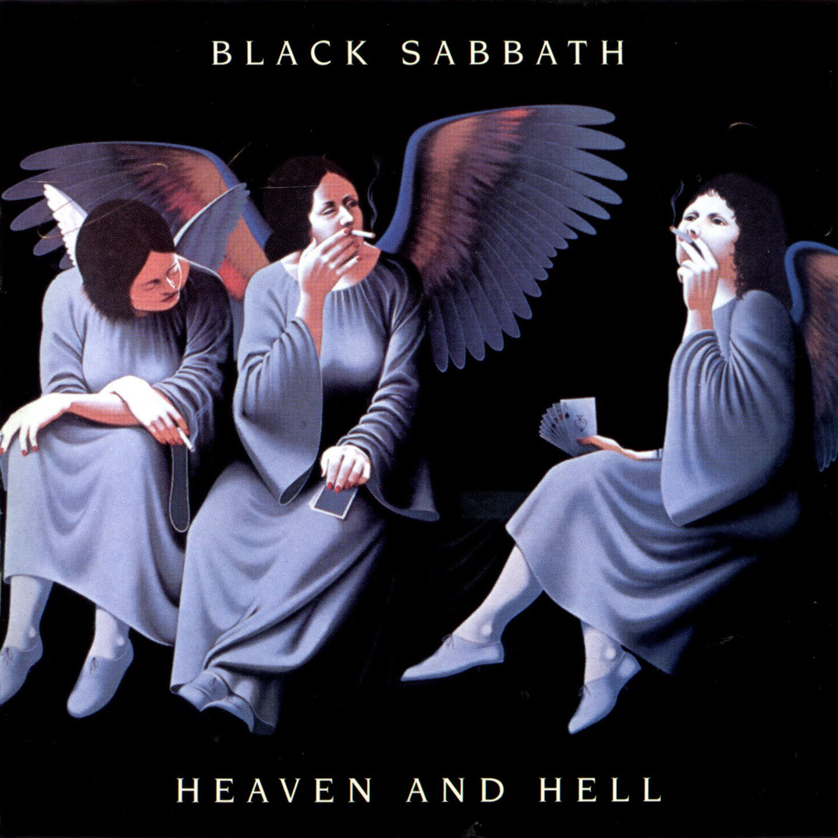
Sabbath would later delve into sword and sorcery, most notably through the song Neon Knights, from their 1980 album, Heaven and Hell, their first with new singer, Ronnie James Dio. Neon Knights begins with a love story interrupted by a cry of alarm. There follows three stanzas of quick paced lyrics, loaded with sword and sorcery references, a call to battle sung over a locomotive of power chords:
Cry out to legions of the brave
Time again to save us from the jackals of the street
Ride out, protectors of the realm
Captain’s at the helm, sail across the sea of lights
Circles and rings, dragons and kings
Weaving a charm and a spell
Blessed by the night, holy and bright
Called by the toll of the bell
Bloodied angels fast descending
Moving on a never-bending light
Phantom figures free forever
Out of shadows, shining ever-bright
Neon Knights!
Neon Knights!
Dio is also credited with pioneering the use of the ‘evil eye’, learned from his Sicilian grandmother, whereby one extends the pointer and pinky finger into the air, as a catch all symbol for Heavy Metal.
The second great Heavy Metal band of the 1960s, Led Zeppelin, also hailed from northern England. But, rather than write protest songs, Zeppelin reached into England’s past for their inspiration. The Immigrant Song, from the band’s 1971 album, Led Zeppelin III, is sung from the point of view of a longboat full of Vikings, ‘We come from the land of the ice and snow/ From the midnight sun where the hot springs blow/Hammer of the gods will drive our ships to new land/ To fight the horde, sing and cry: Valhalla, I am coming!” And then the refrain, “On we sweep with threshing oar, our only goal will be the western shore,” a clear reference to the Viking raiding armies of the 8th and 9th centuries which landed on England’s coast.
Zeppelin also sung about violent sword and sorcery. The Battle of Evermore, from the album Led Zeppelin IV, is accompanied not by an electric guitar but by a mandolin, giving it a medieval or renaissance feel. Like dozens of Zeppelin songs, the plain meaning in The Battle of Evermore is vague and open to interpretation. That said, the lyrics are packed with references to ‘tyrants’ and ‘dark lords’, and do seem to tell the tale of farmers dropping the plow and picking up the sword to fight a great battle at night, “Tired eyes on the sunrise/waiting for the eastern glow.” There are also unmistakable battle references: “Oh the war is common cry/Pick up you swords and fly/ The sky is filled with good and bad/That mortals never know.” In writing the song, lead singer Robert Plant borrowed heavily from J.R.R. Tolkien’s Lord of the Rings, singing, for example, “The drums will shake the castle wall, The ringwraiths ride in black.” The first line is lifted almost verbatim from Return of the King, while the second is a dragon riding demon which appears throughout Tolkien’s trilogy.
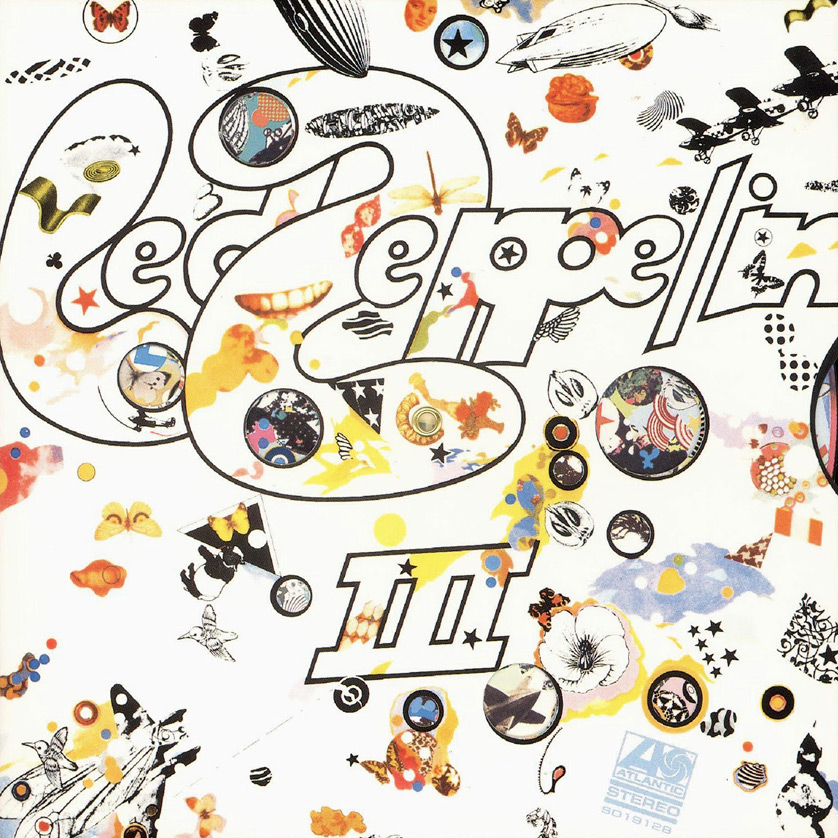
While Led Zeppelin dabbled in Viking mythology, an American band, Man o’ War embraced it without apology or irony churning out albums based on Norse heroism. Their 2007 release, God’s of War, is a concept album devoted to the exploits of the Norse God, Odin. God’s of War depicts the band members in black leather pants and spikes, with swords held high and surrounded by naked, willing women. The band members play the part, donning leather and chains and maintaining bodies rivaling Greek Olympians. The brotherhood of men – knights and warriors – has always been a central theme in Man-o-War’s work, with album titles like Sign of the Hammer (another Viking reference) and The Triumph of Steel. Earlier work dealt not only with Vikings, but with general medieval war. Their 1982 song, Battle Hymn, portrays an army of freemen on a night march toward an epic battle against an unidentified evil enemy. The words are sung to typical Heavy Metal power chords and accompanied by a military style drumbeat. “By moonlight we ride ten thousand side by side/With swords drawn held high our whips and armour shine/Hail to thee our infantry still brave beyond the grave/All sworn the eternal vow the time to strike is now.” The refrain is simply the spoken word “kill . . . kill” or ‘victory . . . victory” backed by choir like singing.
By 1980, a second wave of British Heavy Metal, led by Iron Maiden, was asserting itself. Formed in the mid 1970s, no band ever mixed martial glory and Heavy Metal like Iron Maiden. No band was ever quite so British either. Iron Maiden shows were (and are) packed with of imagery from Great Britain’s military past, from murals of the Crimean and the Great wars, to video montages of Winston Churchill and the British military during World War II. As such, the band wrote a trio of songs chronicling all three conflicts.
The first song in the trio is 1983’s The Trooper. Written by bassist Steve Harris, The Trooper recounts the Charge of the Light Brigade at the Battle of Balaclava, as commemorated in Alfred Lord Tennyson’s famous poem. “We hurdle bodies that lay on the ground/and the Russians fire another round/We get so near yet so far away/we won’t live to fight another day.” With an operatic style, Bruce Dickinson sings over a guitar duet evoking horse’s hooves pounding the ground. During live performances Dickenson dons a Victorian era redcoat and a white pith helmet, and waves a Union Jack over his head. The video for the song blends Iron Maiden performance footage with a silent movie production of Tennyson’s Charge of the Light Brigade.
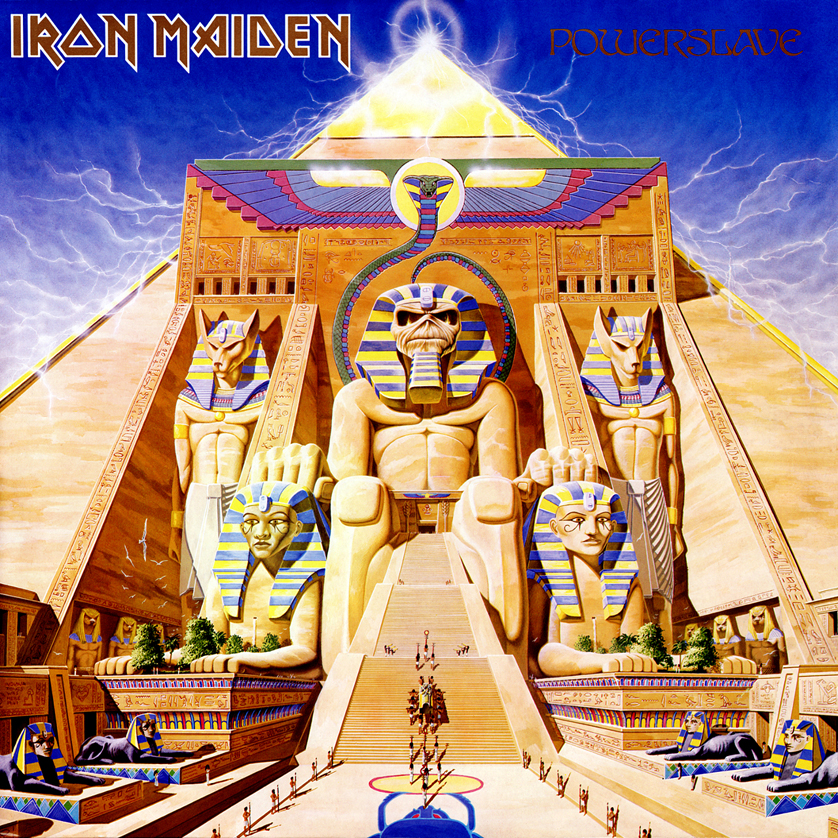
Another classic Maiden war song, Aces High, comes from their 1986 album, Power Slave. Aces High is sung from the view of Spitfire pilot during the height of the Battle of Britain. The band often opens its shows by playing audio of Winston Churchill’s ‘Fight them on the Beaches’ speech accompanied by montage footage of the British people, army, and the RAF. When the Prime Minister says ‘we shall never surrender’ the footage switches to nighttime anti-aircraft fire. The band begins to play, a driving, heavy, rhythmic riff accompanied by a drum beat that reminds one of anti-aircraft bursts. The first verse of Aces High describes the beginning on an aerial battle; the scream of air raid sirens, RAF pilots running to their spitfires. The second verse is about aerial combat: “Move in to fire at the main stream of bombers/Let off a sharp burst and then turn away/rollover spin round and come in behind them/move to their blindsides and firing again.” There follows a bridge sung over quick guitar riffs simulating machine gun fire: “Running. Scrambling. Flying/ Rolling. Turning. Diving/ Doing it Again!” And then finally the refrain:
Run
Live to fly
Fly to live
Do or Die
Won’t you run
Live to fly
Fly to live
Aces high
Like The Trooper, Aces High does not glorify war. Instead it conveys the desperation of RAF pilots, the seemingly endless dog fights, and the impersonal and dehumanizing nature of aerial combat.
The band’s 2003 album, Dance of Death, also features a war ballad, Paschendale. Once again the music sets the scene. This time, guitarist Dave Murray begins by tapping and pulling his fingers of the fret board, creating a gentle, though ominous, rain like sound. But, it doesn’t last. Guitars and drums combine to a make thunderous roar similar to that of a rolling artillery barrage approaching a trench. Like he does in when performing The Trooper, Dickinson dresses the part, donning a trench coat and World War One era helmet. He stands on a stage in front of a mural depicting the slaughter of the World War One battlefield. This time, Dickinson addresses the listener, inviting him to view the body of a young dead solider: “In a foreign field he lay/lonely soldier unknown grave/ on his dying words he prays/ tell the world of Paschendale.”
After another stanza Dickinson switches to the point of view of the young solider, gruffly singing over a chorus of power chords:
Laying low in a blood filled trench
Killing time ’til my very own death
On my face I can feel the falling rain
Never see my friends again
In the smoke in the mud and lead
The smell of fear and the feeling of dread
Soon be time to go over the wall
Rapid fire and the end of us all
After several more powerful stanzas and an orgy of guitar solos and power chords, the song returns to its beginning. The light fret playing returns, bringing back the sound of rain. There follows four simple, gentle stanzas to conclude the song, “See my spirit on the wind/Across the lines beyond the hill/Friend and foe will meet again/Those who died at Paschendale.”
Along with their effort to chronicle Britain’s great battles, the band wrote songs about other conflicts. Maiden’s first important war song was Run to the Hills, off 1981’s The Number of the Beast, a song about the American Indian wars. Dickinson sings from both sides of the conflict. Run to the Hills begins from the Indian’s point of view:
White Man came
Across the sea
He brought us pain
And misery
We fought him hard
We fought him well
Out on the plain
We gave him Hell!
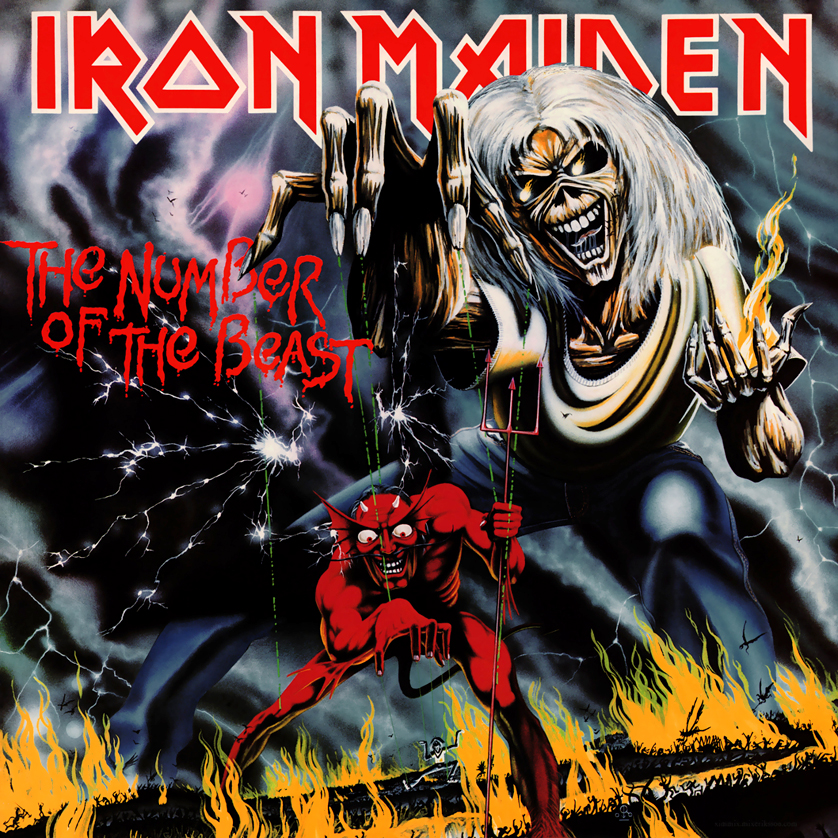
In the second verse, Dickinson switches to the U.S. Cavalry’s perspective: “Riding through dust clouds and barren wastes/galloping hard on the plains/chasing the Redskins back to their holes/ fighting them at their own game.” Like The Trooper, the video for Run to the Hills uses performance and old movie footage, this time a silent movie, The Uncovered Wagon, depicting a farcical Indian attack on a wagon train, only the wagons have been replaced with early automobiles and the Indians are riding bicycles.
One of Iron Maiden’s most stirring songs is These Colors Don’t Run, from their 2006 album A Matter of Life or Death. The album art is war related, with several skeletons clad in U.S. Army World War Two uniforms walking before, curiously, a Soviet T-72 tank. “These Colors Don’t Run” isn’t about British arms so much as it is about yeomanry, freemen fighting tyranny. In that sense, These Colors Don’t Run could be about any solider of democracy. The song conjures up images of the Union Jack, Canadian Red Ensign, Australian Southern Cross, or the Stars and Stripes flying in the wind. Dickinson sets the scene:
It’s the same in every country when you say you’re leaving
Left behind the loved ones waiting silent in the hall
Where you’re going lies adventure others only dream of
Red and green light this is real and so you go to war
After a bridge comes the triumphant, almost defiant refrain: “Far away from the land of our birth/ We fly our flag in some foreign earth/We sailed away like our fathers before/ These colours don’t run from cold bloody war.”
Helping to immortalize Maiden is their mascot, Eddie the Head. Eddie, as he is most often called, is a mummified skeleton, and has decorated the band’s album art from the beginning. Almost happy and jovial, he has been drawn in a Crimean War era redcoat complete with Union Jack and sword, a First World War soldier in full kit, and an RAF pilot in the cockpit. Eddie is all knowing and all powerful. The Number of the Beast album art shows him holding Lucifer’s decapitated head in the palm of his hand, a look of triumph and mischief graces his face. On The Trooper, Eddie charges toward the viewer, leaving broken cannons and shattered bodies in his wake. The Angel of Death looms in the background. Eddie repeats the scene for Paschendale cover art, wearing the kit of a World War One Era Tommy and charging straight ahead through a First World War moonscape. On Aces High, Eddie is shown at the helm of a Spitfire, teeth barred in determination, thumbs on the trigger, indifferent to the bullets that have riddled his cockpit. In the background, a smoldering German fighter corkscrews to the ground. During live performances a giant walking version of Eddie often appear on stage in various costumes.
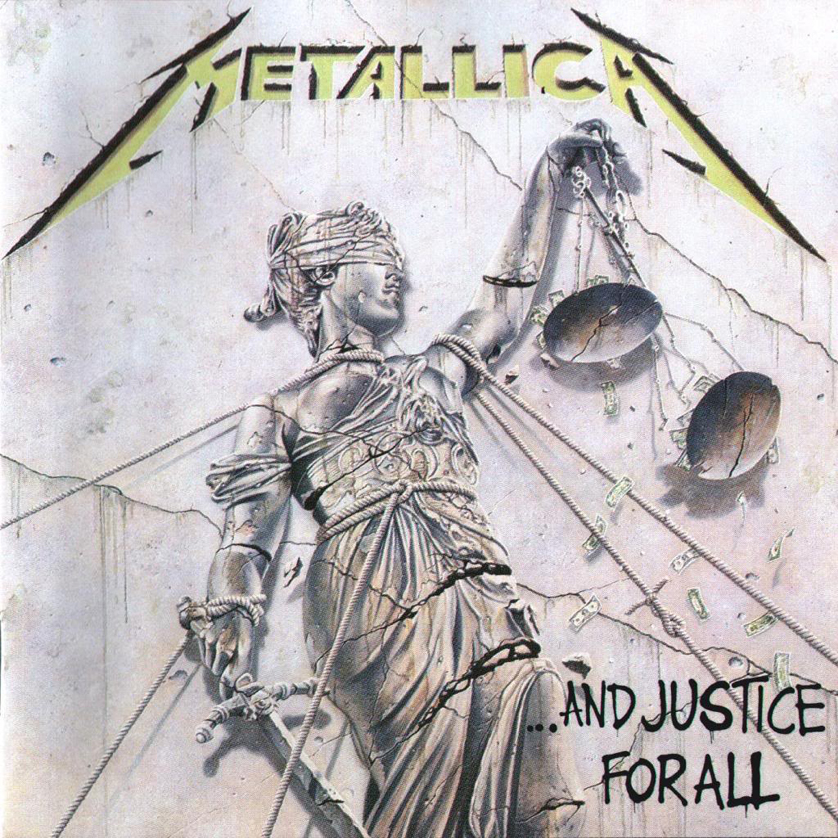
By the mid 1980’s, a new wave of American bands burst onto the scene. These bands rejected some of the slower tempos of early metal bands in favor of quick passed riffs and called their genre Thrash Metal. In 1989, Metallica unleashed their fourth album, And Justice For All. The fourth track, One, is based on Dalton Trumbo’s 1939 antiwar novel, Johnny Got His Gone, and tells the story of a First World War Doughboy who has lost his eyesight, hearing, and all his limbs in battle. Like a lot of metal songs, One begins deceptively gently, with simple guitar playing, but this is eventually supplanted by power chords. ‘Now that the war is through with me/I’m waking up I cannot see/That’s there’s not much left of me/ Nothing is real but pain now,” followed by a brutal chorus, ‘Hold my breath as I wait for death/Oh please god help me.” The song’s bridge features rapid fire riffs which seem to stimulate machinegun fire followed by angry lyrics in which the listener is invited to place himself in the protagonist’s fate.
Darkness
Impressing me
All that I see
Absolute horror
I cannot live
I cannot die
Trapped in myself
Body my holding cell
The song is also important because it was the subject of Metallica’s first music video and features montage footage from the 1971 film of Trumbo’s book. Though more than seven minutes long, One saw major airtime on MTV, a considerable accomplishment for the band which, up until then, had been largely ignored by TV and radio.
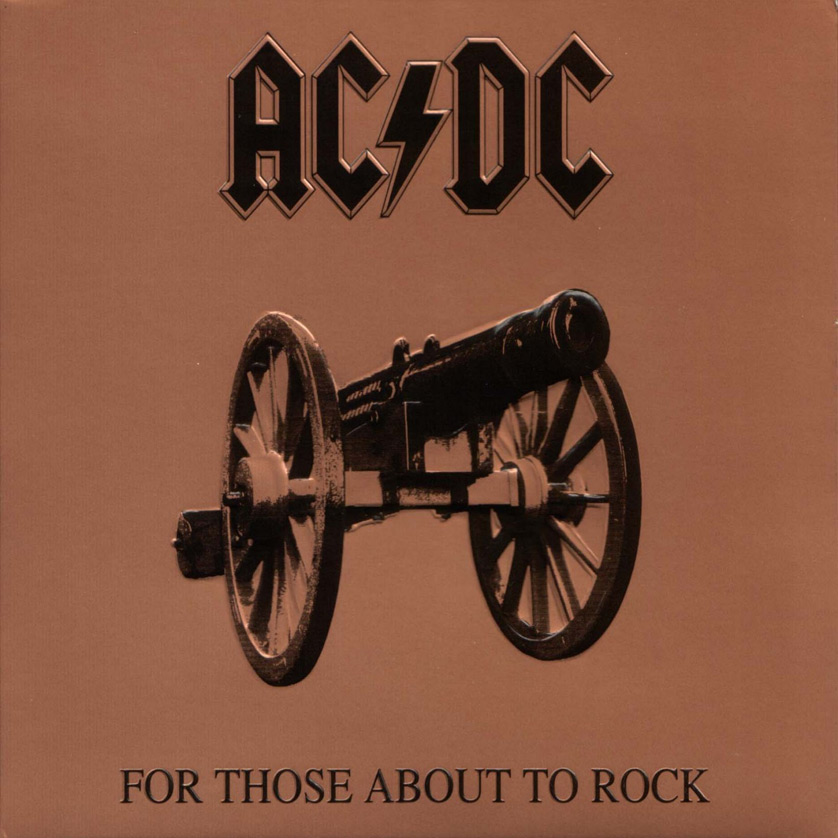
War metal is not the exclusive province of America and Great Britain. Perhaps the most joyous war song ever was written is For Those About to Rock, We Salute You, by the Australian band, AC/DC. While not specifically about war, For Those About to Rock is loaded with militaristic imagery and elusions. The title is a play on the old Roman gladiator oath to the emperor, ‘We who are about to die salute you.’ The song begins with simple finger picking by lead guitarist Angus Young, followed by ominous, grave sounding power chords played by his brother, rhythm guitarist Malcolm Young. The last stanza captures the song’s militaristic feel: “We’re just a battery for hire with a guitar fire/ Ready and aimed at you/ Pick up your balls and load up your cannon/ For a twenty-one gun salute.” Then front man Brian Johnson wails, ‘For those about to Rock- Fire!’ a Napoleonic era cannon fires and then the chorus chimes in “We salute you!” For decades AC/DC has ended their lives shows with For Those About to Rock, and even brings mock up cannons onto the stage which are loaded with boom and smoke producing pyrotechnics.
For over four decades Metal bands have sung of the horrors of war, protested military conflict, extolled the virtues of military brotherhood, and recounted some of history’s greatest battles. In all rock and roll their musical style is the best means of doing so. It has even made appearances on the battlefield. Heavy Metal has been played by American soldiers as they rolled into battle, and blasted at the enemy as they hunkered down against American attacks. AC/DC, played at maximum volume, has been used to extract information from Taliban and al-Qaida prisoners, making Heavy Metal a tool of war.
To contact the author:
William Stroock | 10 Simonson Lane, Bridgewater, NJ 08807 | wtstroock@yahoo.com
